The relatively young kingdom, funded in 1932, was long an oil provider for the entente and then allied powers in WW2 and with new oilfield being discovered and privaitized exploitation in the 1960s, the Saudi Army progressed from ignisificant to one of the largest in the middle east by far, but displaying a worrying array of heterogenity, with British, then French, Italian and finally US, South Korean or even Chinese procurements, and now a willfull domestic military industry, and a first product meeting worldwide success, the Al Fahd APC. For when, the first Saudi Main Battle Tank ? Now for a not overblown menu, coldwar and modern tanks and AFVs of Saudi Arabia will be seen here. It's a modern forces bloodied in 1934, and more recently in Yemen and the Gulf War.
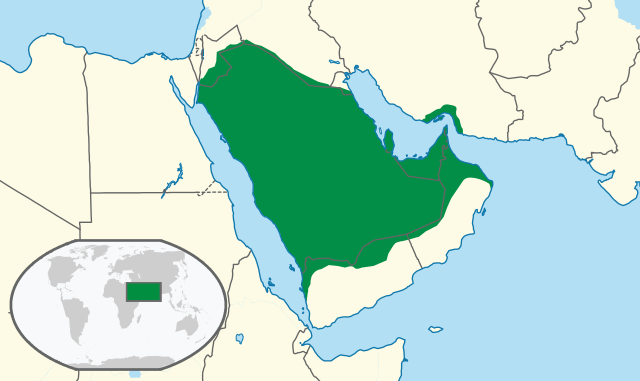
From Lawrence of Arabia to the bounty of Petrodollars, the history of Saudi Arabia is one of the largest an most unforgiving country on earth, constituted as a nation in 1932. Geographically, the Kingdom of Saudi Arabia (KSA) is located not in Africa, but West Asia, covering most of the Arabian Peninsula (2,150,000 km2 or 830,000 sq miles), making it the 5th-largest country in Asia and largest of the Middle East. It is bordered by the Red Sea (west), Jordan Iraq, and Kuwait north, to the east, the Persian Gulf with Qatar and the UAE. To the west, Oman, Yemen to the south and Bahrain as an island country, on the east coast. The Gulf of Aqaba separates Saudi Arabia from Egypt and Israel as well. Its coastline runs both along the Red Sea and Persian Gulf. Its administrative capital, Riyadh is often overshadowed by the prestige of Mecca and Medina in the Arab and Muslim world in general.
Part of the Ottoman Empire in 1900, national identity started to emerge long before based from Riyad, but the country remained divided under tribal rule. In 1902, Abdul Rahman's son, Abdul Aziz (later known as Ibn Saud, founder of the modern kingdom) recaptured control of Riyadh and creating the third "Saudi state". In 1913, Ibn Saud with full support of the Ikhwan, (a tribal army inspired by Wahhabism, led by Faisal Al-Dawish) captured Al-Ahsa from the Ottomans. In 1916, British interests in the region believed it was useful to play over local nationalist sentiments to start a rebellion. Bedouin tribes were enouraged by the Sharif of Mecca, Hussein bin Ali to lead a pan-Arab Revolt and create a united Arab state. After 1918, freed from Ottoman rule, the territory was left to Hussein bin Ali, which became became King of Hejaz. Ibn Saud meanwhile, instead of the Arab Revolt concetrated with the Al Rashid. He took the title Sultan of Nejd in 1921 and with the Ikhwan army, conquered the Kingdom of Hejaz in 1924–25, crowning himself on 10 January 1926 as king.
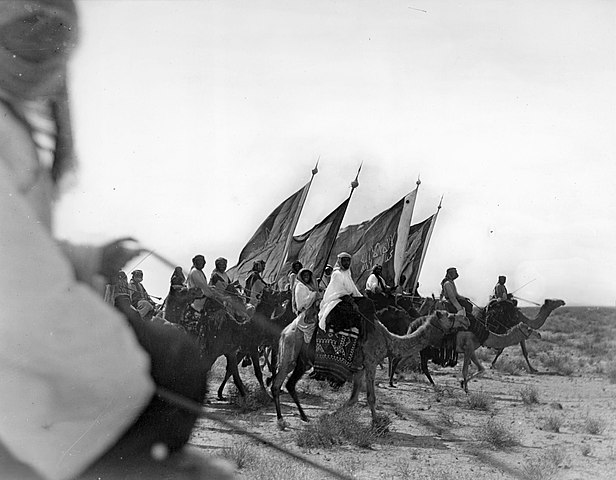
Ikhwan Army in the 1920s (cc)
Emboldened by these successes however, tribal chiefs leading the Ikhwan army started to raid neighbouring to British protectorates of Transjordan, Iraq and Kuwait notably to expand Wahabbism, but this met Ibn Saud's opposition, fearing a direct conflict with the British. Conservely Ikhwan criticized Ibn Saud's domestic policies towards modernization and welcoming non-Muslim foreigners, notably consultants, companies and investors. What followed was a two-year war of a modernized Ibn Saud's army, to defeat in 1929 Ikhwan at the Battle of Sabilla. On 23 September 1932, the two kingdoms (Hejaz and Nejd) were united as the single Kingdom of Saudi Arabia, a national holiday since.
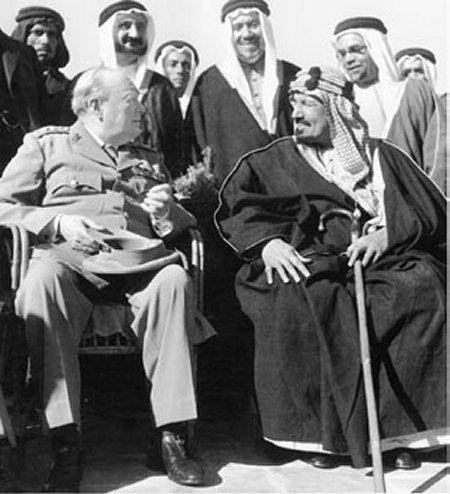
Winston Churchill and King Abd al Aziz of Saudi Arabia.
So the earliest Saudi "army" was a gathering of irregular tribal companies, but trained and supplied by the British, which became logical allies in this quest against fiercely independent and traditionalist nomads. The army already could trace its roots back to 1744, and the "Saudi State", well before the Kingdom was funded. In 1901 ground forces became a separate branch of the armed forces, created to unify tribal armies under a single military command.
From 1933 it was renamed "Agency of Defence" and depended of the Finance Minister. The army was equipped with modern rifles and machine guns, mortars, as well as armoured cars and even a few tanks. However during the Ikhwan Revolt (1927–30) and Mutawakkilite War (1934), mobile Saudi Forces (horse and camel-borne) were given vital information from western pilots used as mercenaries, sometimes even proceeding to some attacks. The latter also called the Saudi-Yemeni war, pitted 30,000 Saudi (+8,000 regulars) against 37,000 (12,000 regulars) on the Yemeni side. The former had more modern equipment, but could not push on their advantage in mountaineous terrain, on which Yemeni tribes were well experimented.
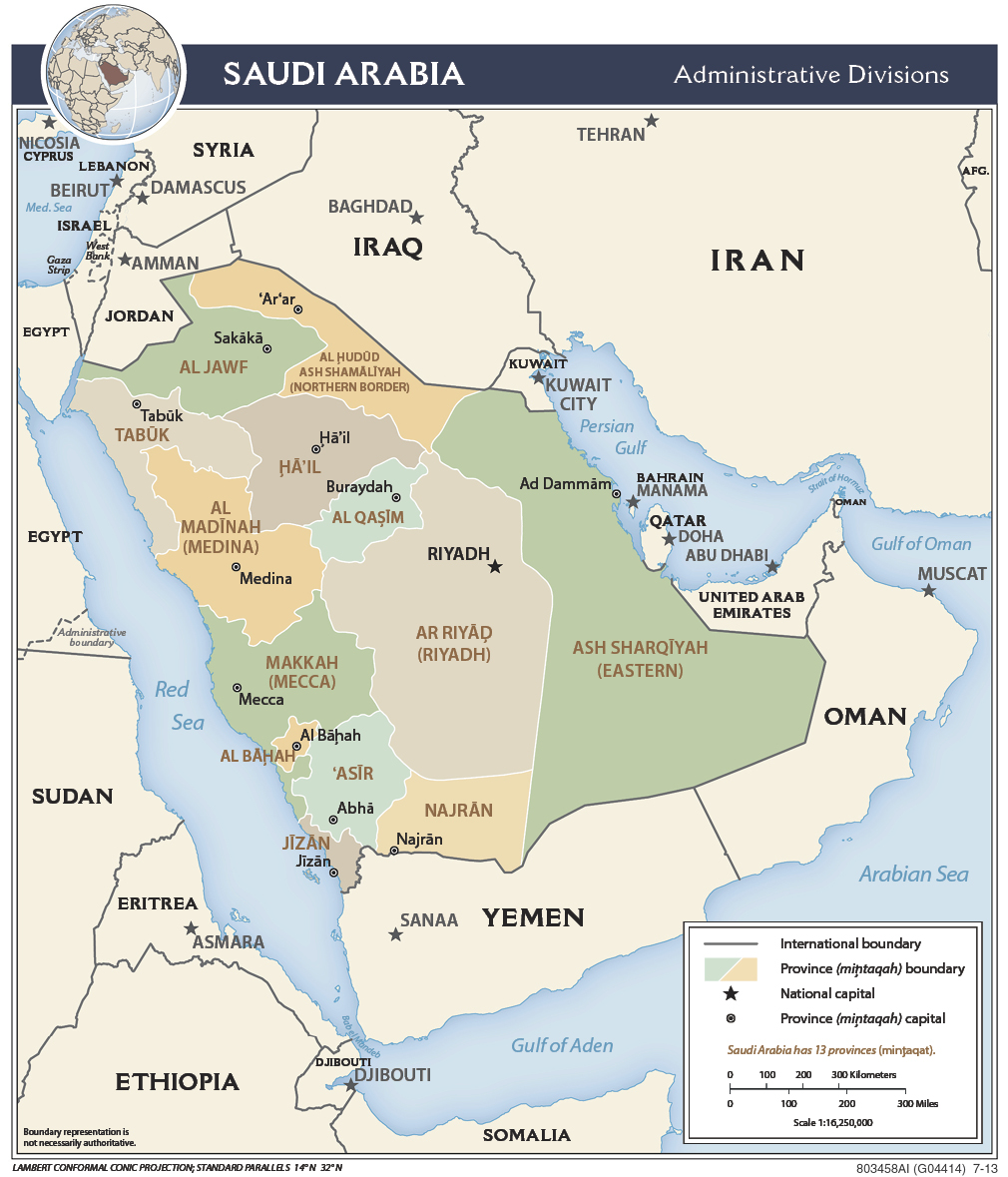
The majority of troops were camel-raiding bedouin tribal levies. They were called upon for action, and of course very experienced at desert warfare but came with their own outdated equipment and sometimes dubious loyalty as well as some leftover of raiding habits. They were well used in the 1920s campaigns against Hejaz and Asir and 1934 against North Yemen and from 1933, gradually replaced by new western-armed regular troops.
The Saudis adopted the Mauser rifle, but also grenades, mortars, and other vehicles and equipment from Belgium and likely Czechoslovakia. From the British, they operated the Vickers Mk. II Light Tanks (purchased in 1933) and Vickers Carden Loyd Mk.VIb tankettes 1. Opposing them, the Yemeni were not as backwards as one would have thought. On the contrary, they had been trained by the Italians, which wanted to protect their east african colonies. Italy provided six tanks (likely CV33 Tankettes), 2,000 rifles, four AA guns and radios in 1926. Iraq provided also rifles and more radios. In the 1950s the Yemeni army continued to be supplied, at first by Egypt, and then the USSR. Relations between the two countries remained tense to this day (the conflict is ongoing).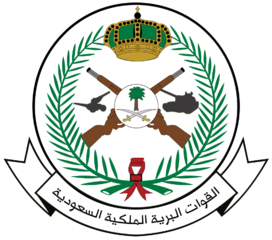 In 1938, vast reserves of oil were discovered in the Al-Ahsa region (coast of the Persian Gulf), so the development of oil fields started in 1941. The contract went at the time to the US-controlled Aramco (Arabian American Oil Company), explaining long-held links between the US and KSA. Oil provided an unprecedented economic prosperity, but also political leverage. The country in WW2 was courted by the allies. It was also a long term objective of Rommel and the Afrika Korps if they succeeded to defeat British Egypt.
In 1938, vast reserves of oil were discovered in the Al-Ahsa region (coast of the Persian Gulf), so the development of oil fields started in 1941. The contract went at the time to the US-controlled Aramco (Arabian American Oil Company), explaining long-held links between the US and KSA. Oil provided an unprecedented economic prosperity, but also political leverage. The country in WW2 was courted by the allies. It was also a long term objective of Rommel and the Afrika Korps if they succeeded to defeat British Egypt.
In WW2, Saudi Arabia had an army which by 1944 from an "Agency" was developed and incorporated into the "Armed Forces Inspectorate". Saudi Arabian patrols never had to deal with any axis forces, and if El Alamein was lost by the British, leaving open the gates of Egypt, the US would probably have sent troops at the Suez canal as last bulwark. By November 1942 with the landings in French NAF (Op. Torch) and near-simultaneous victory at El Alamein, this scenario evaporated.
Nevertheless, the Saudi Army was ready: Levies were around 15 000, while regulars were c3000 personnel, mostly used for policing or border security. It's even unknown at that stage if the tanks deployed in 1934 were still operational. They had uniforms, state pay, and standardized modern rifles and equipments, even trucks and cars for transportation, but also horses. They were garrisoned all over the country, in forts close to all cities and towns. The air force stayed embryonic but by 1943 financial credits for its modernization called for a fraction of Lend-Lease deliveries granted by the U.S. government. In 1945 a weakened U.S. President Franklin D. Roosevelt secretly met with King Abdul Aziz Ibn Saud aboard a U.S. heavy cruiser in the Suez Canal, to try securing a durable alliance for the US access to cheap oil.
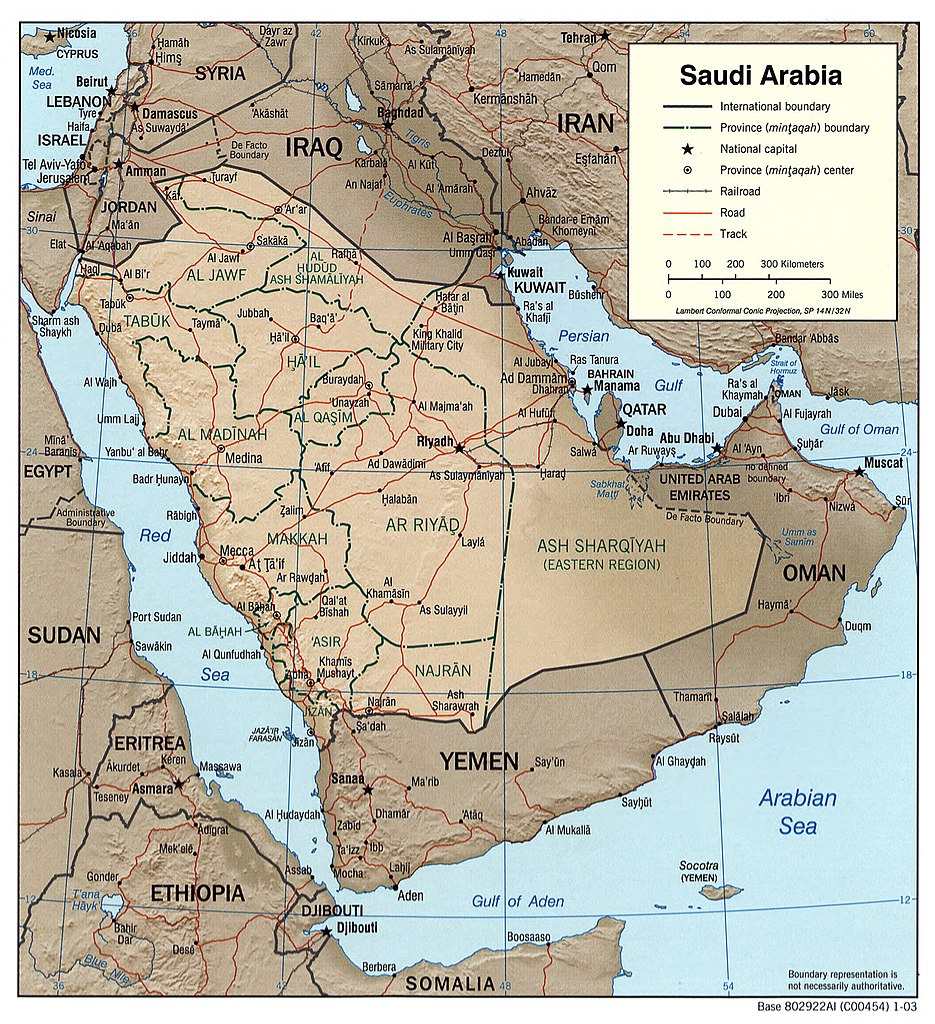
Saudi Arabia 2003 CIA map
Post-WW2, the Saudi Army knew another wave of expansion and modernization: The Arab–Israeli conflict in 1948 came as a schock and brought about a rapid acquisition of extra tanks from the US. A Ministry of Defense was created in 1943 and a military school founded in Taif, all supervized by the US, but after its failure, a U.S. programme ran from 1951. It also also to reach the objective of setting up to five Regimental Combat Teams, even three. There were c7,500–10,000 personal in the Saudi Army (all branches) by 1953. But that same year, Saud of Saudi Arabia succeeded as king. The Saudi army remained limited, and by 1964 Saud was deposed in favour of his half brother Faisal after an intense rivalry, and it was now clear that competence was lacking.
In 1972, Saudi Arabia gained a 20% control in Aramco and the next year the country led a famous oil boycott against Western countries. It was mostly targeted against the west supporting Israel in the Yom Kippur War. The quadrupling of oil prices led to a considerable crisis indeed in the these countries, highly dependent of cheap oil. But probably due to intense political pressures and clandestine operations by 1975 Faisal was assassinated by his nephew, Prince Faisal bin Musaid, but succeeded by his half-brother King Khalid.
In 1975 desirous to get equipments with "no tie attached" to the US, Saudi Arabia's procurement policy moved to what seemed a "middle ground" power, France, for probably one of the largest military contract of the decade, the “Palm Tree contract”, mostly consisting in modernizing the Army with hundred of AMX-30 tanks and derivatives of the latter. The contract went on until 1981. However before the Gulf War of 1990, already from 1980, US presence was reaffirmed and US procurement became the norm again.
By 1976, Saudi Arabia was the undisputed and world's largest oil producer. Khalid's reign saw economic and fast social progress transforming with massive investments in infrastructure and education, to secure a pool of local talents. Foreign policy saw also closer ties with the US.
The fall of Shah Mohammad Reza Pahlavi (Iranian Revolution) in 1979 raised fear in the Kingdom of direct confrontation with Iran due to an ancient rivalry and religious opposition. This triggerred a second wave of arms deals and army equipments. Worried about Soviet intentions and a potential incursion into the Gulf after its invasion of Afghanistan, President Jimmy Carter proclaimed on Jan. 23, 1980 (State of the Union Address) that the country was ready to defend American interests in the Middle East and later the U.S. Central Command (CENTCOM) was created to establish a larger U.S. military presence in the region. Thus, even if the Saudi army failed to proceed to a valuable conventional deterrence, US Forces were locally ready to intervene.
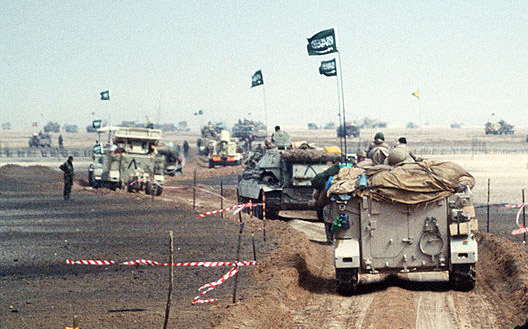
Saudi M113s
1979 had a long-term influence on Saudi foreign/domestic policy as it was feared the Shi'ite minority of Eastern Province close to the oil fields might rebel under the influence of Iran and indeed, many uprisings took place in the region starting with the 1979 Qatif Uprising. The Grand Mosque Seizure in Mecca, by Islamist extremists angered by what they esteemed to be a corruption, "un-Islamic nature" of the government. 10 days were necessary to retake the Mosque. Instead on doubling down on liberalization, the government enforced a much stricter observance of traditional religious and social norms and promote the ulema. By 1980, Saudi Arabia bought out the remaining US interests in Aramco, gaining full national control of its oil fields, but King Khalid died of a heart attack in June 1982, succeeded by his brother, King Fahd, which essentially maintained the same policy, including close relations with the US, purchase of more American and British equipment.

Panhard AMLs in Nigerian service, formely Saudi vehicles.
Oil wealth led to rapid technological modernization and urbanization as well as mass public education, creation of new media, but still increasing presence of foreign workers was resented. However access to medias and the complete political power monopolized by the royal family started to lead to discontent among educated Saudis which wanted a derive towards democratization. As for susprises, Saudi Arabia spent $25 billion to support Saddam Hussein in its war against Iran, but condemned the Iraqi invasion of Kuwait in 1990.
The biggest test indeed to the Carter Doctrine was the August 1990 Saddam Hussein's invasion, answered (as asked by King Fahd) by the rapid deployment and station of American and coalition troops in Saudi Arabia. Fahd also invited the Kuwaiti government in exile and many of its citizens while expelling those of Yemen and Jordan supporting Iraq. Operation Desert Shield, the largest deployment of forces since vietnam was setup namely to defend Saudi Arabia. It transitioned to Operation Desert Storm and US troops freed Kuwait from Iraqi occupation. This proved to the Saud Authorities the US were ready to commit fully. Emboldened by this showdown and crushing victory against the "world's fourth army" as painted by the medias, procurement went back to US first and foremost.
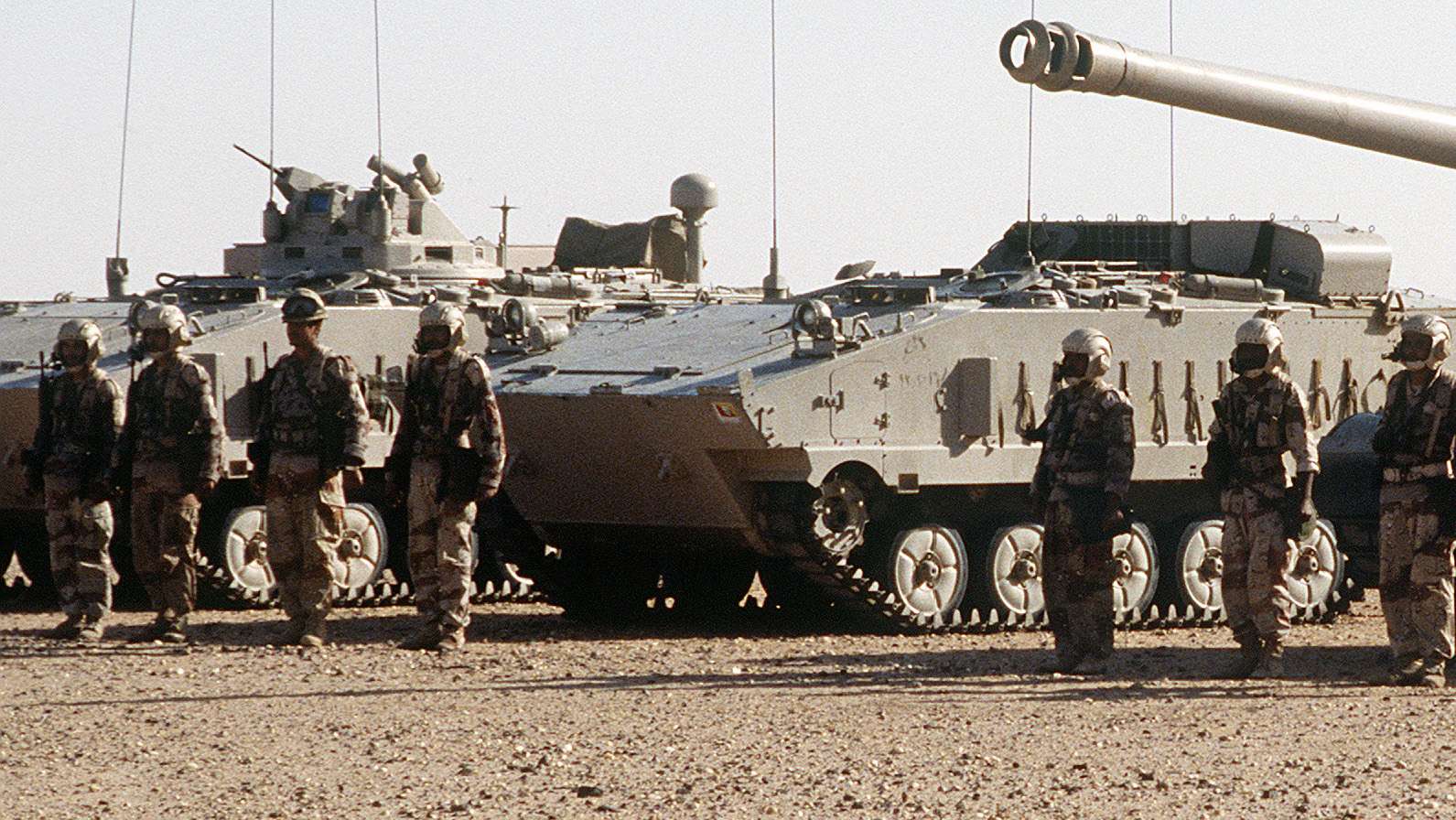
Saudi AMX-10P
At the time, US and French procurements led to a quirky organization: Saudi Arabia land forces mixed a typical “American brigade” (8th) counting M1 Abrams tanks, M2 Bradleys and other similar equipment of such US unit, alongside a “French brigade” (4th) with French equipment, AMX-30 tanks, AMX-10P and others, keeping supplier continuity but costing more in maintenance, creating logistical and interoperability problems. Saudi Field artillery battalions for example had both French 155mm SPGs, 105mm and 155mm towed guns while main antitank weapons as the US TOW, British Dragon, French HOT. For AA, the French Crotale SAM cohabits with the US Stinger and Redeye. The Royal Saudi Land Forces (RSLF) is now largely dependent of the Bradley Fighting Vehicle made and maintained by FMC Arabia (Vinnell for logistics support).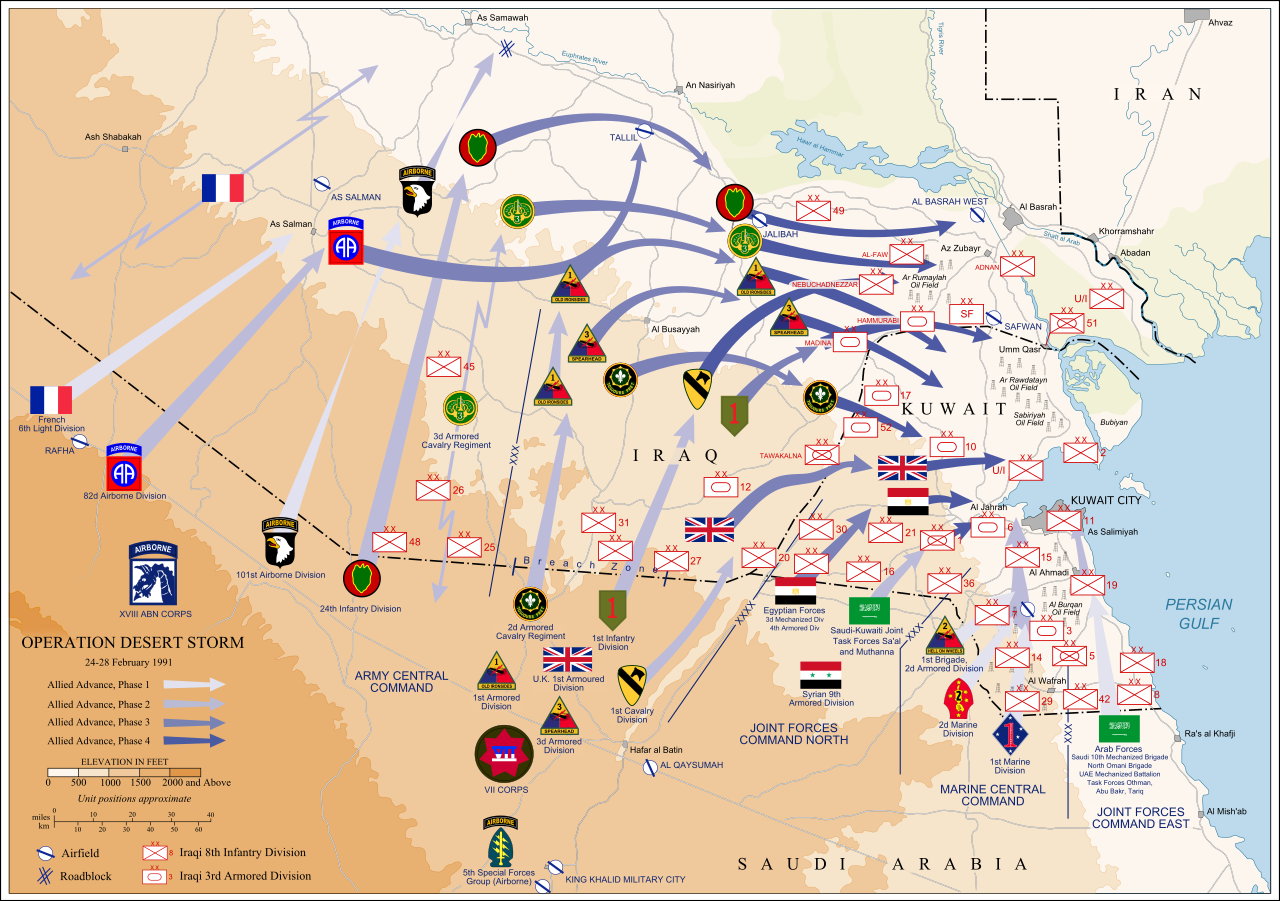
This war also gave the opportunity to the Saudi Forces to test its metal against Saddam: In 1991, Saudi Arabian Air Force contributed to bombing raids on Iraq whereas its land forces took part in the invasion to liberate Kuwait. The Saudi army was in 1990 ready for such expedition, and trusted to take place mostly on the right flank of the coalition, close to the coast. That way any strong point encountered could be met with naval firepower.
The Saudi Arabians were given responsibility for the defense of Khafji, and mobilized the 2nd Saudi Arabian National Guard Brigade (Task Force Abu Bakr). The 5th Battalion of the 2nd Saudi Arabian National Guard Brigade was placed a screen north and west of Khafji. The Saudi Arabian National Guard Brigade started with four motorized battalions (three line companies each and 5,000 soldiers). This was bolstered by the Tariq Task Force: Saudi Arabian marines, single Moroccan mechanized infantry battalion, two Senegalese infantry companies. Othman and Omar Task Forces comprised two Mechanized Ministry of Defense and Aviation Brigades screening south 3 km (1.9 mi) of the border. The road south of Khafji was guarded by a single battalion of Saudi Arabian National Guard reinforced by a battalion of Qatari tanks. There was a reserve of main defenses 20 km (12 mi) south of it. This "Arab contingent" was led by General Khaled bin Sultan.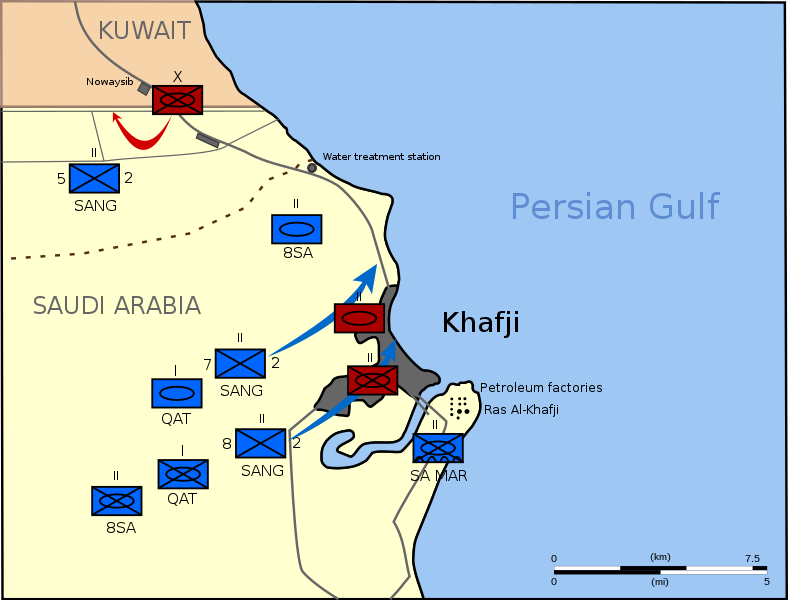
This coalition deployed the AMX-30 main battle tanks (Saudi only) as well as V-150 and LAV-25 wheeled vehicles. To face a possible Iraqi offensive with the T-72s these forces were ill-prepared. The AMX-30's 105 was only able to penetrate the T-72 with the latest AFPSDS rounds, whereas the V-150 had a low velocity 90mm cannon and so were the Qatari LAV-25s had their 25 mm Bushmaster gun but a few organic LAV-AT (antitank missiles). On 28 January 1991 there were warnings of an impending offensive. The sky was on principle owned by the coalition and aerial and ground reconnaissance units proceeded to give some warning to the arab forces. The Iraqi started in the night of 29 January with 2,000 soldiers in several hundred armored fighting vehicles possibly the 3rd Armored Division and 5th Mechanized Division, the flank protected to the west by the 1st Mechanized Division.
Three columns mostly made up of T-62 tanks and APCs were spotted firts at observation post 4 (Al-Zabr police building) and elements of the Iraqi 6th Armored Brigade were ordered to proceed on Al-Zabr and engaged the coalition. At 20:00 hours, on U.S. Marines observation post already noticed moves through their night vision scopes. The battalion headquarters was contacted, but without answer. Jamming was suspected and runners were sent with attempts to contact Company D and HQ, done at 20:30 hours. Task Force Shepard was deployed in response. Coalition soldiers at observation post only recourse against armour was to call in air support, which arrived by 21:30 (F-15E, F-16C, A-10, even three AC-130 gunships) and the battle started at OP-4. Ground troops were overwheled and fored to withdrawal. To cover it, its platoon of LAV-25s and LAV-ATs were deployed forward. However the first hit was unfortunately a friendly LAV-AT, but past this, the wheeled force met th Iraqi and LAV-25s with their autonannon aimed at the Iraqi tanks's optics.
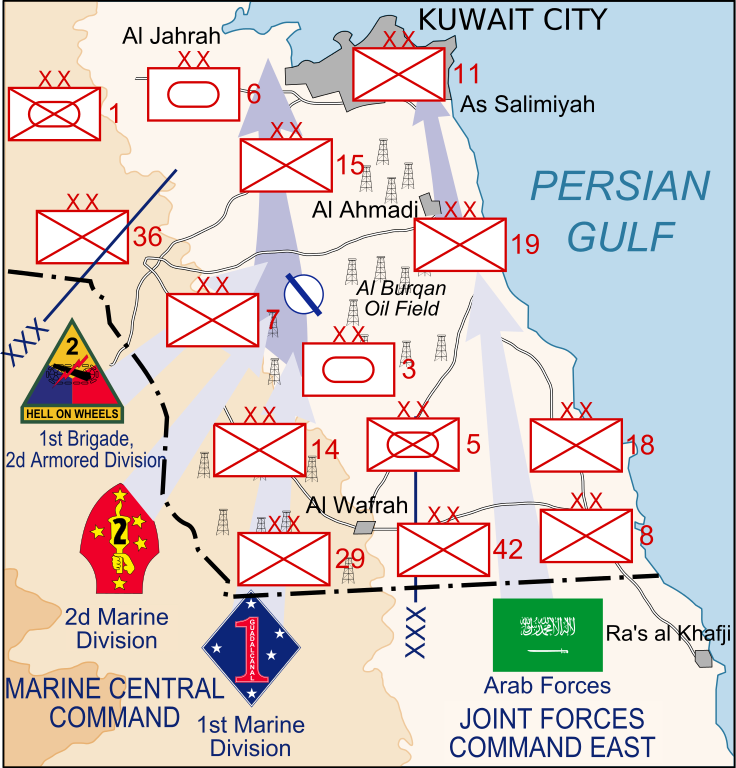
The "Kuwait Heel"
A-10 were "in the blind" and started dropping flares, and one fell on a friendly vehicle, which was hit by a AGM-65 Maverick. The withdrawal being done, the Iraqi 6th Armored Brigade withdrew at Al-Wafrah under heavy fire. Symbolic of this war, the coalition lost 11 to friendly fire, none from the enemy. The Iraqi 5th Mechanized Division crossed the Saudi Arabian border near observation post 1 meanwhile and the first company of the Saudi 2nd Light Infantry Armored Battalion reported a column of some 60–100 BMPs. They were dealt by A-10s and Harriers. 29 tanks, all T-62s were alro reported, one being destroyeed by an anti-tank missile. Next A-10s and F-16s engaged the columns around post 1 and repulsed it over the Kuwaiti border. Air attacks went on until the following day. Another columnw as spotted by post 2, and also engaged and repulsed during the night.
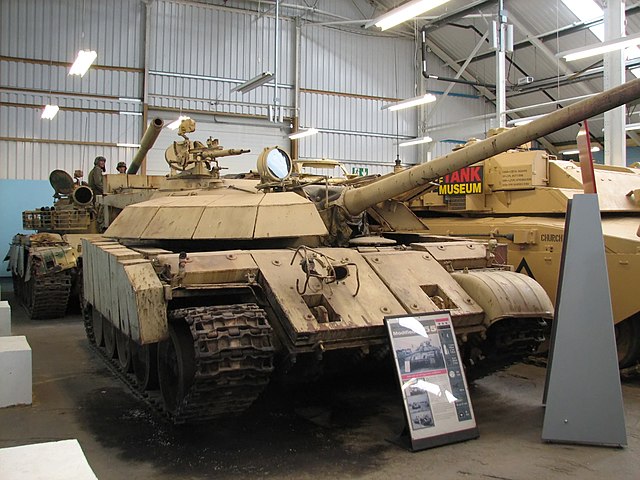
One of the T-55AD Enigma captured during the battle
But an additional Iraqi column crossed the Saudi Arabian border to the East along the coast towards Khafji, held by the 5th Mechanized Battalion, 2nd Saudi Arabian National Guard Brigade. They withdrew when taken under heavy fire as ordered. The 8th and 10th Saudi Arabian National Guard Brigades also made screening operations but did not engage, leaving the road to Khafji open. Iraqi T-55s used deceiption, crssing the Saudi Arabian border, signaling their surrender but when approached by Saudi troops, teversed their turrets and fired. They were soon dealt with by air support from a nearby AC-130. Alone, the gunship claimed 13 Iraq AFVs, including the T-55s.
The Iraqi advance towards Khafji proceeded despite AC-130 action, but air support never arrived. Khafji was at 00:30 on 30 January. Two Marines reconnaissance (1st Marine Division) were trapped in two apartment buildings. They still called artillery fire. Later in the night, Coalition air support, mostly helicopters took a tally on the Iraqu forces there. On the 30th a response was organized, with authorization by CiC N. Schwartzkopf to engage Iraqi forces and retake the city of Khafji. For this, 2nd Saudi Arabian National Guard Brigade's 7th Battalion, (V-150 armored cars) supported by two Qatari tank companies (AMX-30 MBTs) were prepared for the attack, supported by U.S. Army Special Forces and Marine Reconnaissance teams under overall command of Lt. Colonel Matar which ordered the advance at 17:00 hours. They linked with the 3rd USMC Regiment south of Khafji. They first met a platoon of Iraqi T-55s, three being destroyed by the Qatari tanks, capturing a fourth one. Cover artillery fire was provided by the 10th Marine Regiment.
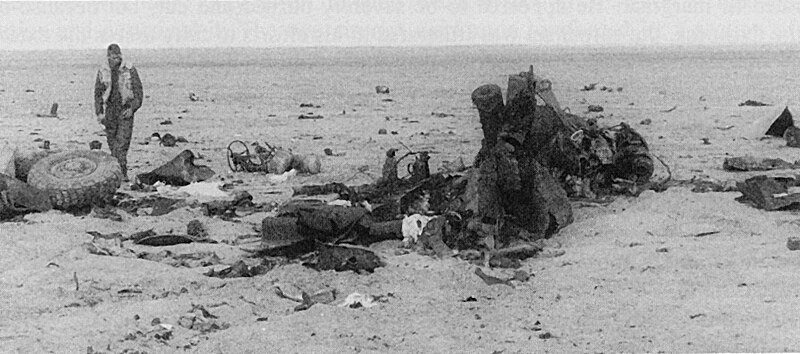
Destroyed LAV-25
Long story short, the urban fighting was fierce but ultimately combined armed paid off and Khafji was recaptureed on 31 January and "cleaned up" on 1 February. The 5th Battalion proceeding to the north engaged a column of Iraqi tanks cllsing in and this engagement led to 13 Iraqi tanks and APCs destroyed, six captured as well as 116 Iraqi POWs. The Saudi 8th Battalion engaged the city from the northeast and eventually link up with 7th Battalion. The battle cost the Saudis 18 dead and 50 wounded, seven V-150 vehicle knocked out as well as two Saudi main battle tanks (AMX-30). But air support had been instrumental all along, destroying the bulk of Iraqi forces. One US AC-130 was shot down by Iraqi SAMs. All but one V150 destroyed by RPG-7 fire in close-range and one by a 100 mm T-55 round. Usual Iraqi figure given is 71 dead, 148 wounded and 702 missing, plus 80-90 armoured vehicles. Three Iraqi mechanized/armored divisions had been gutted. As an early heavy engagement it was full of lessons for the start of the offensive 48h later.
(More to come)
Equipments list as of today.
m.koreatimes.co.kr K-Samn Chunma deliveries
Royal Saudi Strategic Missile Force
General Directorate of Border Guard
Saudi Royal Guard
Saudi National Guard
globalsecurity.org Saudi Army Modernization
SALW Guide, Global distribution and visual identification
After Oil-for-Security: A Blueprint for Resetting US-Saudi Security Relations
jstor.org - Saudi Arabia 1950-80: Between Nationalism and Religion
1934 army on forum.axishistory.com
Upcoming list
Saudi Arabia: Creation of a nation and army
Origin and foundation of the Kingdom

From Lawrence of Arabia to the bounty of Petrodollars, the history of Saudi Arabia is one of the largest an most unforgiving country on earth, constituted as a nation in 1932. Geographically, the Kingdom of Saudi Arabia (KSA) is located not in Africa, but West Asia, covering most of the Arabian Peninsula (2,150,000 km2 or 830,000 sq miles), making it the 5th-largest country in Asia and largest of the Middle East. It is bordered by the Red Sea (west), Jordan Iraq, and Kuwait north, to the east, the Persian Gulf with Qatar and the UAE. To the west, Oman, Yemen to the south and Bahrain as an island country, on the east coast. The Gulf of Aqaba separates Saudi Arabia from Egypt and Israel as well. Its coastline runs both along the Red Sea and Persian Gulf. Its administrative capital, Riyadh is often overshadowed by the prestige of Mecca and Medina in the Arab and Muslim world in general.
Part of the Ottoman Empire in 1900, national identity started to emerge long before based from Riyad, but the country remained divided under tribal rule. In 1902, Abdul Rahman's son, Abdul Aziz (later known as Ibn Saud, founder of the modern kingdom) recaptured control of Riyadh and creating the third "Saudi state". In 1913, Ibn Saud with full support of the Ikhwan, (a tribal army inspired by Wahhabism, led by Faisal Al-Dawish) captured Al-Ahsa from the Ottomans. In 1916, British interests in the region believed it was useful to play over local nationalist sentiments to start a rebellion. Bedouin tribes were enouraged by the Sharif of Mecca, Hussein bin Ali to lead a pan-Arab Revolt and create a united Arab state. After 1918, freed from Ottoman rule, the territory was left to Hussein bin Ali, which became became King of Hejaz. Ibn Saud meanwhile, instead of the Arab Revolt concetrated with the Al Rashid. He took the title Sultan of Nejd in 1921 and with the Ikhwan army, conquered the Kingdom of Hejaz in 1924–25, crowning himself on 10 January 1926 as king.

Ikhwan Army in the 1920s (cc)
Emboldened by these successes however, tribal chiefs leading the Ikhwan army started to raid neighbouring to British protectorates of Transjordan, Iraq and Kuwait notably to expand Wahabbism, but this met Ibn Saud's opposition, fearing a direct conflict with the British. Conservely Ikhwan criticized Ibn Saud's domestic policies towards modernization and welcoming non-Muslim foreigners, notably consultants, companies and investors. What followed was a two-year war of a modernized Ibn Saud's army, to defeat in 1929 Ikhwan at the Battle of Sabilla. On 23 September 1932, the two kingdoms (Hejaz and Nejd) were united as the single Kingdom of Saudi Arabia, a national holiday since.

Winston Churchill and King Abd al Aziz of Saudi Arabia.
So the earliest Saudi "army" was a gathering of irregular tribal companies, but trained and supplied by the British, which became logical allies in this quest against fiercely independent and traditionalist nomads. The army already could trace its roots back to 1744, and the "Saudi State", well before the Kingdom was funded. In 1901 ground forces became a separate branch of the armed forces, created to unify tribal armies under a single military command.
From 1933 it was renamed "Agency of Defence" and depended of the Finance Minister. The army was equipped with modern rifles and machine guns, mortars, as well as armoured cars and even a few tanks. However during the Ikhwan Revolt (1927–30) and Mutawakkilite War (1934), mobile Saudi Forces (horse and camel-borne) were given vital information from western pilots used as mercenaries, sometimes even proceeding to some attacks. The latter also called the Saudi-Yemeni war, pitted 30,000 Saudi (+8,000 regulars) against 37,000 (12,000 regulars) on the Yemeni side. The former had more modern equipment, but could not push on their advantage in mountaineous terrain, on which Yemeni tribes were well experimented.

The majority of troops were camel-raiding bedouin tribal levies. They were called upon for action, and of course very experienced at desert warfare but came with their own outdated equipment and sometimes dubious loyalty as well as some leftover of raiding habits. They were well used in the 1920s campaigns against Hejaz and Asir and 1934 against North Yemen and from 1933, gradually replaced by new western-armed regular troops.
The Saudis adopted the Mauser rifle, but also grenades, mortars, and other vehicles and equipment from Belgium and likely Czechoslovakia. From the British, they operated the Vickers Mk. II Light Tanks (purchased in 1933) and Vickers Carden Loyd Mk.VIb tankettes 1. Opposing them, the Yemeni were not as backwards as one would have thought. On the contrary, they had been trained by the Italians, which wanted to protect their east african colonies. Italy provided six tanks (likely CV33 Tankettes), 2,000 rifles, four AA guns and radios in 1926. Iraq provided also rifles and more radios. In the 1950s the Yemeni army continued to be supplied, at first by Egypt, and then the USSR. Relations between the two countries remained tense to this day (the conflict is ongoing).
Petrodollars, WW2 and the cold war.
 In 1938, vast reserves of oil were discovered in the Al-Ahsa region (coast of the Persian Gulf), so the development of oil fields started in 1941. The contract went at the time to the US-controlled Aramco (Arabian American Oil Company), explaining long-held links between the US and KSA. Oil provided an unprecedented economic prosperity, but also political leverage. The country in WW2 was courted by the allies. It was also a long term objective of Rommel and the Afrika Korps if they succeeded to defeat British Egypt.
In 1938, vast reserves of oil were discovered in the Al-Ahsa region (coast of the Persian Gulf), so the development of oil fields started in 1941. The contract went at the time to the US-controlled Aramco (Arabian American Oil Company), explaining long-held links between the US and KSA. Oil provided an unprecedented economic prosperity, but also political leverage. The country in WW2 was courted by the allies. It was also a long term objective of Rommel and the Afrika Korps if they succeeded to defeat British Egypt.
In WW2, Saudi Arabia had an army which by 1944 from an "Agency" was developed and incorporated into the "Armed Forces Inspectorate". Saudi Arabian patrols never had to deal with any axis forces, and if El Alamein was lost by the British, leaving open the gates of Egypt, the US would probably have sent troops at the Suez canal as last bulwark. By November 1942 with the landings in French NAF (Op. Torch) and near-simultaneous victory at El Alamein, this scenario evaporated.
Nevertheless, the Saudi Army was ready: Levies were around 15 000, while regulars were c3000 personnel, mostly used for policing or border security. It's even unknown at that stage if the tanks deployed in 1934 were still operational. They had uniforms, state pay, and standardized modern rifles and equipments, even trucks and cars for transportation, but also horses. They were garrisoned all over the country, in forts close to all cities and towns. The air force stayed embryonic but by 1943 financial credits for its modernization called for a fraction of Lend-Lease deliveries granted by the U.S. government. In 1945 a weakened U.S. President Franklin D. Roosevelt secretly met with King Abdul Aziz Ibn Saud aboard a U.S. heavy cruiser in the Suez Canal, to try securing a durable alliance for the US access to cheap oil.

Saudi Arabia 2003 CIA map
Post-WW2, the Saudi Army knew another wave of expansion and modernization: The Arab–Israeli conflict in 1948 came as a schock and brought about a rapid acquisition of extra tanks from the US. A Ministry of Defense was created in 1943 and a military school founded in Taif, all supervized by the US, but after its failure, a U.S. programme ran from 1951. It also also to reach the objective of setting up to five Regimental Combat Teams, even three. There were c7,500–10,000 personal in the Saudi Army (all branches) by 1953. But that same year, Saud of Saudi Arabia succeeded as king. The Saudi army remained limited, and by 1964 Saud was deposed in favour of his half brother Faisal after an intense rivalry, and it was now clear that competence was lacking.
In 1972, Saudi Arabia gained a 20% control in Aramco and the next year the country led a famous oil boycott against Western countries. It was mostly targeted against the west supporting Israel in the Yom Kippur War. The quadrupling of oil prices led to a considerable crisis indeed in the these countries, highly dependent of cheap oil. But probably due to intense political pressures and clandestine operations by 1975 Faisal was assassinated by his nephew, Prince Faisal bin Musaid, but succeeded by his half-brother King Khalid.
In 1975 desirous to get equipments with "no tie attached" to the US, Saudi Arabia's procurement policy moved to what seemed a "middle ground" power, France, for probably one of the largest military contract of the decade, the “Palm Tree contract”, mostly consisting in modernizing the Army with hundred of AMX-30 tanks and derivatives of the latter. The contract went on until 1981. However before the Gulf War of 1990, already from 1980, US presence was reaffirmed and US procurement became the norm again.
By 1976, Saudi Arabia was the undisputed and world's largest oil producer. Khalid's reign saw economic and fast social progress transforming with massive investments in infrastructure and education, to secure a pool of local talents. Foreign policy saw also closer ties with the US.
The fall of Shah Mohammad Reza Pahlavi (Iranian Revolution) in 1979 raised fear in the Kingdom of direct confrontation with Iran due to an ancient rivalry and religious opposition. This triggerred a second wave of arms deals and army equipments. Worried about Soviet intentions and a potential incursion into the Gulf after its invasion of Afghanistan, President Jimmy Carter proclaimed on Jan. 23, 1980 (State of the Union Address) that the country was ready to defend American interests in the Middle East and later the U.S. Central Command (CENTCOM) was created to establish a larger U.S. military presence in the region. Thus, even if the Saudi army failed to proceed to a valuable conventional deterrence, US Forces were locally ready to intervene.

Saudi M113s
1979 had a long-term influence on Saudi foreign/domestic policy as it was feared the Shi'ite minority of Eastern Province close to the oil fields might rebel under the influence of Iran and indeed, many uprisings took place in the region starting with the 1979 Qatif Uprising. The Grand Mosque Seizure in Mecca, by Islamist extremists angered by what they esteemed to be a corruption, "un-Islamic nature" of the government. 10 days were necessary to retake the Mosque. Instead on doubling down on liberalization, the government enforced a much stricter observance of traditional religious and social norms and promote the ulema. By 1980, Saudi Arabia bought out the remaining US interests in Aramco, gaining full national control of its oil fields, but King Khalid died of a heart attack in June 1982, succeeded by his brother, King Fahd, which essentially maintained the same policy, including close relations with the US, purchase of more American and British equipment.
Panhard AMLs in Nigerian service, formely Saudi vehicles.
Oil wealth led to rapid technological modernization and urbanization as well as mass public education, creation of new media, but still increasing presence of foreign workers was resented. However access to medias and the complete political power monopolized by the royal family started to lead to discontent among educated Saudis which wanted a derive towards democratization. As for susprises, Saudi Arabia spent $25 billion to support Saddam Hussein in its war against Iran, but condemned the Iraqi invasion of Kuwait in 1990.
The biggest test indeed to the Carter Doctrine was the August 1990 Saddam Hussein's invasion, answered (as asked by King Fahd) by the rapid deployment and station of American and coalition troops in Saudi Arabia. Fahd also invited the Kuwaiti government in exile and many of its citizens while expelling those of Yemen and Jordan supporting Iraq. Operation Desert Shield, the largest deployment of forces since vietnam was setup namely to defend Saudi Arabia. It transitioned to Operation Desert Storm and US troops freed Kuwait from Iraqi occupation. This proved to the Saud Authorities the US were ready to commit fully. Emboldened by this showdown and crushing victory against the "world's fourth army" as painted by the medias, procurement went back to US first and foremost.

Saudi AMX-10P
At the time, US and French procurements led to a quirky organization: Saudi Arabia land forces mixed a typical “American brigade” (8th) counting M1 Abrams tanks, M2 Bradleys and other similar equipment of such US unit, alongside a “French brigade” (4th) with French equipment, AMX-30 tanks, AMX-10P and others, keeping supplier continuity but costing more in maintenance, creating logistical and interoperability problems. Saudi Field artillery battalions for example had both French 155mm SPGs, 105mm and 155mm towed guns while main antitank weapons as the US TOW, British Dragon, French HOT. For AA, the French Crotale SAM cohabits with the US Stinger and Redeye. The Royal Saudi Land Forces (RSLF) is now largely dependent of the Bradley Fighting Vehicle made and maintained by FMC Arabia (Vinnell for logistics support).
Saudis armor against Iraq in 1990

This war also gave the opportunity to the Saudi Forces to test its metal against Saddam: In 1991, Saudi Arabian Air Force contributed to bombing raids on Iraq whereas its land forces took part in the invasion to liberate Kuwait. The Saudi army was in 1990 ready for such expedition, and trusted to take place mostly on the right flank of the coalition, close to the coast. That way any strong point encountered could be met with naval firepower.
The Saudi Arabians were given responsibility for the defense of Khafji, and mobilized the 2nd Saudi Arabian National Guard Brigade (Task Force Abu Bakr). The 5th Battalion of the 2nd Saudi Arabian National Guard Brigade was placed a screen north and west of Khafji. The Saudi Arabian National Guard Brigade started with four motorized battalions (three line companies each and 5,000 soldiers). This was bolstered by the Tariq Task Force: Saudi Arabian marines, single Moroccan mechanized infantry battalion, two Senegalese infantry companies. Othman and Omar Task Forces comprised two Mechanized Ministry of Defense and Aviation Brigades screening south 3 km (1.9 mi) of the border. The road south of Khafji was guarded by a single battalion of Saudi Arabian National Guard reinforced by a battalion of Qatari tanks. There was a reserve of main defenses 20 km (12 mi) south of it. This "Arab contingent" was led by General Khaled bin Sultan.
Battle of Khafji

This coalition deployed the AMX-30 main battle tanks (Saudi only) as well as V-150 and LAV-25 wheeled vehicles. To face a possible Iraqi offensive with the T-72s these forces were ill-prepared. The AMX-30's 105 was only able to penetrate the T-72 with the latest AFPSDS rounds, whereas the V-150 had a low velocity 90mm cannon and so were the Qatari LAV-25s had their 25 mm Bushmaster gun but a few organic LAV-AT (antitank missiles). On 28 January 1991 there were warnings of an impending offensive. The sky was on principle owned by the coalition and aerial and ground reconnaissance units proceeded to give some warning to the arab forces. The Iraqi started in the night of 29 January with 2,000 soldiers in several hundred armored fighting vehicles possibly the 3rd Armored Division and 5th Mechanized Division, the flank protected to the west by the 1st Mechanized Division.
Three columns mostly made up of T-62 tanks and APCs were spotted firts at observation post 4 (Al-Zabr police building) and elements of the Iraqi 6th Armored Brigade were ordered to proceed on Al-Zabr and engaged the coalition. At 20:00 hours, on U.S. Marines observation post already noticed moves through their night vision scopes. The battalion headquarters was contacted, but without answer. Jamming was suspected and runners were sent with attempts to contact Company D and HQ, done at 20:30 hours. Task Force Shepard was deployed in response. Coalition soldiers at observation post only recourse against armour was to call in air support, which arrived by 21:30 (F-15E, F-16C, A-10, even three AC-130 gunships) and the battle started at OP-4. Ground troops were overwheled and fored to withdrawal. To cover it, its platoon of LAV-25s and LAV-ATs were deployed forward. However the first hit was unfortunately a friendly LAV-AT, but past this, the wheeled force met th Iraqi and LAV-25s with their autonannon aimed at the Iraqi tanks's optics.

The "Kuwait Heel"
A-10 were "in the blind" and started dropping flares, and one fell on a friendly vehicle, which was hit by a AGM-65 Maverick. The withdrawal being done, the Iraqi 6th Armored Brigade withdrew at Al-Wafrah under heavy fire. Symbolic of this war, the coalition lost 11 to friendly fire, none from the enemy. The Iraqi 5th Mechanized Division crossed the Saudi Arabian border near observation post 1 meanwhile and the first company of the Saudi 2nd Light Infantry Armored Battalion reported a column of some 60–100 BMPs. They were dealt by A-10s and Harriers. 29 tanks, all T-62s were alro reported, one being destroyeed by an anti-tank missile. Next A-10s and F-16s engaged the columns around post 1 and repulsed it over the Kuwaiti border. Air attacks went on until the following day. Another columnw as spotted by post 2, and also engaged and repulsed during the night.

One of the T-55AD Enigma captured during the battle
But an additional Iraqi column crossed the Saudi Arabian border to the East along the coast towards Khafji, held by the 5th Mechanized Battalion, 2nd Saudi Arabian National Guard Brigade. They withdrew when taken under heavy fire as ordered. The 8th and 10th Saudi Arabian National Guard Brigades also made screening operations but did not engage, leaving the road to Khafji open. Iraqi T-55s used deceiption, crssing the Saudi Arabian border, signaling their surrender but when approached by Saudi troops, teversed their turrets and fired. They were soon dealt with by air support from a nearby AC-130. Alone, the gunship claimed 13 Iraq AFVs, including the T-55s.
The Iraqi advance towards Khafji proceeded despite AC-130 action, but air support never arrived. Khafji was at 00:30 on 30 January. Two Marines reconnaissance (1st Marine Division) were trapped in two apartment buildings. They still called artillery fire. Later in the night, Coalition air support, mostly helicopters took a tally on the Iraqu forces there. On the 30th a response was organized, with authorization by CiC N. Schwartzkopf to engage Iraqi forces and retake the city of Khafji. For this, 2nd Saudi Arabian National Guard Brigade's 7th Battalion, (V-150 armored cars) supported by two Qatari tank companies (AMX-30 MBTs) were prepared for the attack, supported by U.S. Army Special Forces and Marine Reconnaissance teams under overall command of Lt. Colonel Matar which ordered the advance at 17:00 hours. They linked with the 3rd USMC Regiment south of Khafji. They first met a platoon of Iraqi T-55s, three being destroyed by the Qatari tanks, capturing a fourth one. Cover artillery fire was provided by the 10th Marine Regiment.

Destroyed LAV-25
Long story short, the urban fighting was fierce but ultimately combined armed paid off and Khafji was recaptureed on 31 January and "cleaned up" on 1 February. The 5th Battalion proceeding to the north engaged a column of Iraqi tanks cllsing in and this engagement led to 13 Iraqi tanks and APCs destroyed, six captured as well as 116 Iraqi POWs. The Saudi 8th Battalion engaged the city from the northeast and eventually link up with 7th Battalion. The battle cost the Saudis 18 dead and 50 wounded, seven V-150 vehicle knocked out as well as two Saudi main battle tanks (AMX-30). But air support had been instrumental all along, destroying the bulk of Iraqi forces. One US AC-130 was shot down by Iraqi SAMs. All but one V150 destroyed by RPG-7 fire in close-range and one by a 100 mm T-55 round. Usual Iraqi figure given is 71 dead, 148 wounded and 702 missing, plus 80-90 armoured vehicles. Three Iraqi mechanized/armored divisions had been gutted. As an early heavy engagement it was full of lessons for the start of the offensive 48h later.
Saudis armor against Yemen
In 2000, the government spent billions to expand its military and notably replaced equipments (now outdated) from the 1970s Palm Tree contract.(More to come)
Organization
(More to come)Birth of an Arab AFV industry
(More to come)Read More/Src
Books
Links
Equipments list as of today.
m.koreatimes.co.kr K-Samn Chunma deliveries
Royal Saudi Strategic Missile Force
General Directorate of Border Guard
Saudi Royal Guard
Saudi National Guard
globalsecurity.org Saudi Army Modernization
SALW Guide, Global distribution and visual identification
After Oil-for-Security: A Blueprint for Resetting US-Saudi Security Relations
jstor.org - Saudi Arabia 1950-80: Between Nationalism and Religion
1934 army on forum.axishistory.com
Videos
srcList of Cold War Saudi Tanks and AFVs
1950-60s Saudi AFVs
 M47 Patton (1950)
M47 Patton (1950)
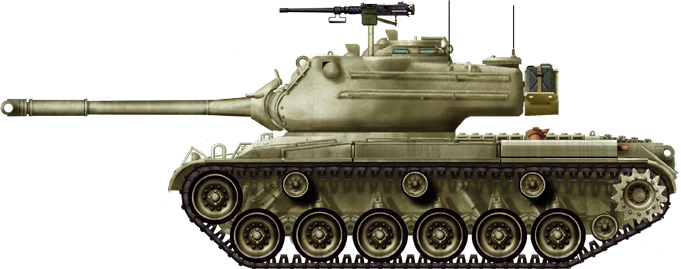
Saudi Arabia obtained 23 directly from the US, 108 on the international market, second hand, likely in the early 1960s. They were resold in the late 1970s to Somalia.
 CGC Commando V100 ()
CGC Commando V100 ()
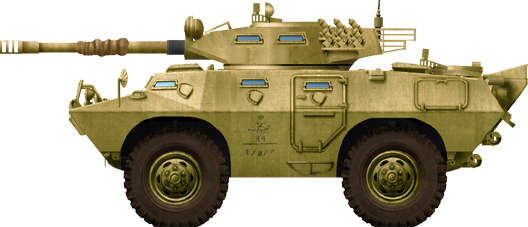
Saudi Arabia became the largest non-US customer woth the delivery of 1,100 V-100, V-150 type CGC commando vehicles. The V-150 had a turret. They were deployed in Operation Desrt Storm.
 Panhard AML (1968)
Panhard AML (1968)
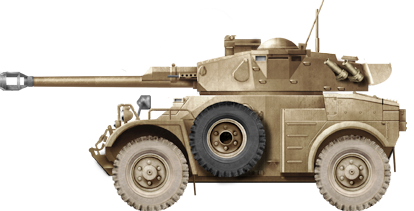
In 1964, the Royal Saudi Army issued a requirement for an armoured car proven in desert warfare and equipped with a large semi-automatic cannon.[58] Bids were accepted from three companies—Alvis, Cadillac Gage, and Panhard—which offered the Saladin, V-100 Commando, and AML, respectively, but the debate over which of the three to adopt was hamstrung by political considerations early on.[58] Saudi Arabia remained inhibited from seeking American assistance in devising suitable defence programmes by the criticism and hostility of other Arab states. Under these circumstances, only arms transactions with French or British firms could be entertained.[59] Despite longstanding diplomatic contacts, the French presence in Riyadh was rather limited compared to that of the United Kingdom, and the latter was in a better position to provide long-term logistical support for armoured cars to the Saudi military.[58] Alvis was initially awarded a contract for 83 Saladins with a ten-year option on spare parts.[58] Final negotiations for the delivery of the Saladins were underway[58] when Sultan bin Abdulaziz abruptly cancelled the purchase in favour of Panhard.[60]
pic Saudi AML-90s and AML-60s donated to the Niger Armed Forces during Operation Desert Shield.[61]
 M113 (1973)
M113 (1973)
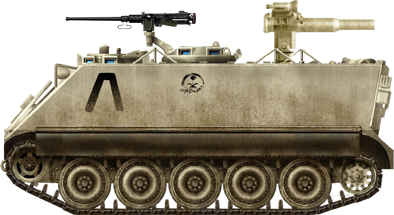
Saudi Arabia became one of the largest customer of the APC, which became its main tracked troop carrier with some 3,000 over the years in several batches. more recent sources claims the total park is now down to 1,190 M113A4. Earlier models are likely to be in storage, resold, or waiting for a possible upgrade. They took notably part in the Saudi Arabian-led intervention in Yemen and in Houthi-Saudi Arabian conflict recently.
The "Palm Tree Contract"
 AMX-30 (1973)
AMX-30 (1973)

In 1972, Saudi Arabia ordered 190 AMX-30S (Sahara) "tropicalized" for desert environment in the Middle East, delivered between 1973 and 1979.
The “Palm Tree contract” also sepcified variants and support vehicles, namely 59 AMX-30D delivered between 1975 and 1979, 12 AMX-30H delivered between 1977 and 1979, 51 AuF1, delivered between 1979 and 1980, 52 AMX-30SA delivered between 1979 and 1981 and 50 AMX-30C1 Shahine-2 delivered in two batches, between 1980 and 1989. To provide training for these, an armored school was opened in Saudi Arabia, which was ran approximately by 2,000 French military advisors and trainers in the 1980s.
At the beginning of the 2000s, the AMX-30 no longer had capabilities to face the Iraqi T-72 or Israeli Merkava so half the AMX-30 park were placed in long-term storage and replaced by 315 M1 M1A2s Abrams and 450 M60A3s ordered and delivered from 1989. In 2002, Saudi Arabia had a fleet of 1,055 combat tanks total, with all 290 AMX-30 vehicles (with varoants) being grouped in the Khamis Mushait region, with 160 to 170 operational. An estimate by Global Security stated 145 were operational as of 2005, and by 2015, they were seen as deployed by the Saudi Border Guard Corps. However as of 2023 they are listed in reserve.
 AMX-30D (1975)
AMX-30D (1975)
 AMX-30H (1977)
AMX-30H (1977)
 AuF1 (1979)
AuF1 (1979)
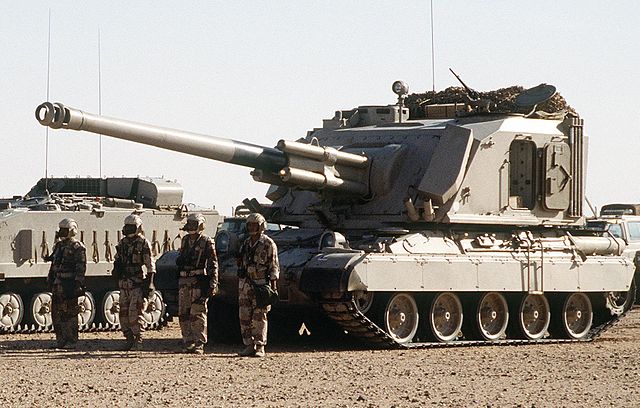
Saudi Arabia also received 51 AUF1 vehicles. AUF2 turrets were locally mounted also on the T-72 chassis and demonstrated in India and Egypt.
 AMX-30SA (1979)
AMX-30SA (1979)
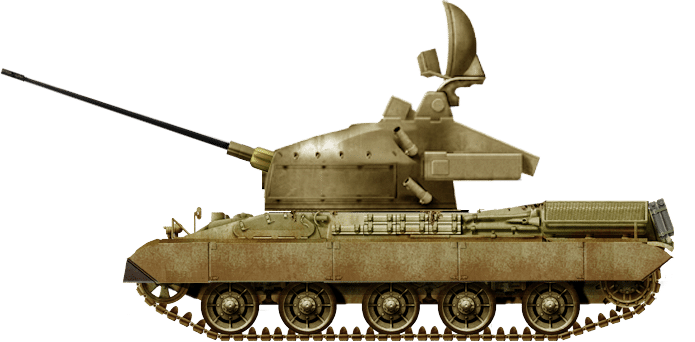
The AMX-30 SA was a long derivative of the AMX-13 DCA (or VDAA), and naturally called AMX-30 DCA. However, since it was only produced as prototype for a production intended for Saudi Arabia, it's production version is perhaps the best known denomination, AMX-30SA. In all, a total of 53 vehicles produced, including the three prototypes left in France for further tests and export exhibitions purposes. Fitted with a pair of 30mm HS-831A autocannons and acquisition/tracking radar, it is likely in storage today (status unknown).
 AMX-30S/CI Shahine I/II (1980)
AMX-30S/CI Shahine I/II (1980)
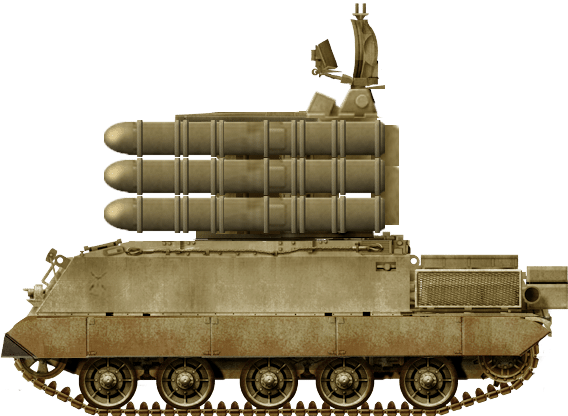
Based on the AMX Roland SPAAML, the AMX-30S Shahine was developed in 1975 for Saudi Arabia, to fire the SA-10 Shahine, a version of the Crotale surface-to-air missile, developed and manufactured by Thomson-CSF. The launch vehicle is heavily inspired by the AMX-30 Roland. The Shahine system was developed locally as an improved Crotale with faster acquisition and a new firing assembly of six canisters mounted on the AMX 30 chassis.
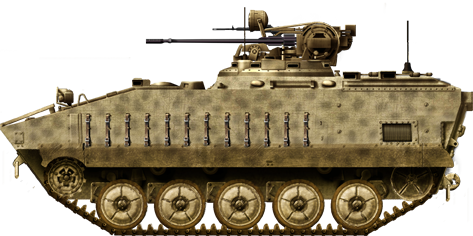
Saudi Arabia purchased 600 vehicles.
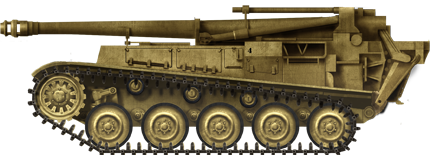
Saudi Arabia purchased 93 Mk.F3 155mm SAU self propelled guns based on the AMX-30. They are still in service today, but probably in second echelon.
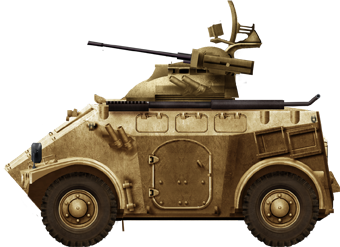
Saudi Arabia purchased 150 vehicle, seemingly all of the VDA (AA) variant.
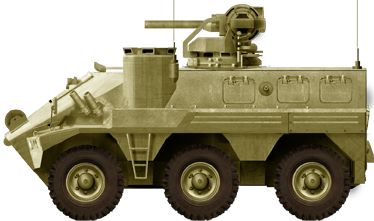
The second middle east customer after Iraq of the type was Saudi Arabia, which ordered 82 vehicles, and later in 2005 donated 44 to the new Iraqi Army.
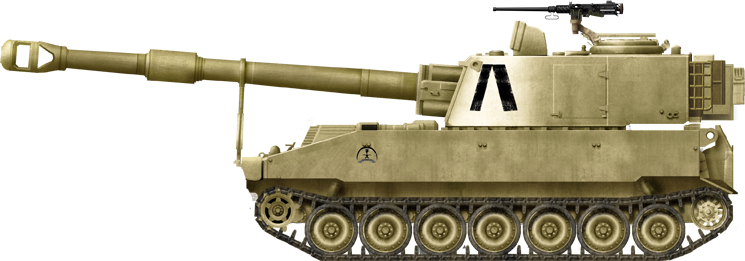
Saudi Arabia purchased 60 A2s currently upgraded to A5s, 36 A5 and 300 A6. In all 136 M109A2/A3, then 600 M109A5 and 177 M109A6 Paladin ordered. Above: M109A2 as part of the Arab coalition, Operation desert Storm 1991.
1980s deliveries

OF-40 Mark 2 tropicalized for Saudi Service. The OF-40 interested Saudi Arabia, that purchased 18 vehicles in 1981. In 1985, Saudi Arabia eventually purchased 18 Mk.2s and the former batch of 18 was upgraded to the Mk.2 standard by OTO Melara. The only trouble with this tank is the absence of NBC protection, but a simple air filter instead.
200 converted with TOWs for Saudi Arabia.
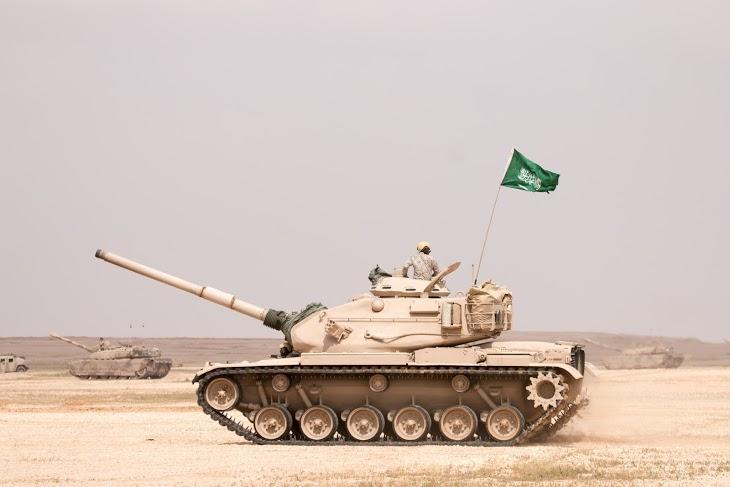
910 M60A1 RISE were acquired by Saudi Arabia, including 250 transferred to North Yemen. The remainder were upgraded to the M60A3 standard during the 1990s. Still frontline. In March 1982, General Dynamics Land Systems (GDLS) purchased Chrysler Defense and planned to end procurement of M60A3 and M60A3 TTS in June 1983 for the US Army, with the purchase of 120 M60A3 TTS as well as M60A3 for Saudi Arabia, and M60A3 hulls for Taiwan expected to end in May 1985. In May 1985 production was relaunched as Egypt placed an order for 94 M60A3 tanks, and became the largest operator in the world, Saudi Arabia is third. Also in 1990, M60A3/E60Bs from Army surpluses were sold Saudi Arabia.

The SANG (Saudi Arabian National Guard) obtained a derivative of the LAV-25, the LAV-M, armed with a 90mm cannon. This important program was the sold export of the Canadian branch of GDLS: The SANG Light Armored Vehicles (LAV) were ordered by the Saudi National Guard (SANG). The contract was signed on July 20, 2006 notified to the US Congress by the Defense Security Cooperation Agency at $5.8 billion. The agreement was assorted by a supported effort to modernize the SANG, in particular with 724 LAV-25, LAV-AG, LAV-M, LAV-AT, LAV-CC, LAV-PC, LAV-A, LAV-AC LAV-E and LAV-R Light Armored Vehicles (LAV) and other systems. This also included training to anti-terrorist and security actions. By June 13, 2011 the order was precised to 25 LAV-25, 8 LAV-G (assault guns), 8 LAV-AT Vehicles, 6 LAV-M, 2 LAV-R, 24 LAV-C2, 3 LAV modified as Personnel Carriers and 3 more as Ammo Carriers plus an engineer Vehicle and two Ambulances. 1,249 for the Saudi Arabian National Guard.
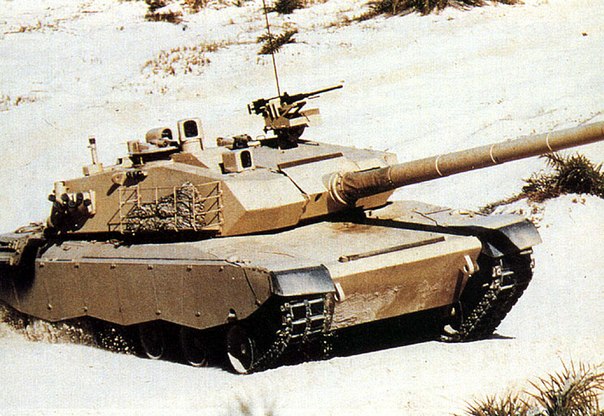
A prospective Al Fahd in Saudi colors
Already wishing to strengtened its tank park in 1987, Saudi received Brazilian Company's Engesa's sales team in 1988, trying to find a first export market for its Osorio main battle tank. Saudi Arabia gave the go-ahead for the development and R&D phase at a cost of US$100 million for its own needs, but negociation dragged on until August 1989 when the Saudi Government announced an order for 318 Osorios (renamed Al Fahd 'Lion Of The Desert') worth US$7.2 billion. The contract however was never signed, probably because the US tried hard to push the M1 Abrams and the British the Challenger. Both, as well as the French AMX-40 were also tested by Saudi Arabia and if the Osorio emerged as a winner in September 1989, secret negociations derailed it in favor of the M1 Abrams just as Iraq invaded Kuwait in 1990. This failure also brought down Engesa.
1990s deliveries
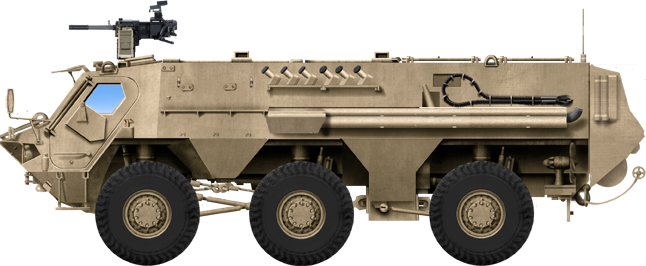
Saudi Arabia purchased 36 vehicles.
Saudi Arabia obtained 140 to the Navy in 1983, plus 300 locally produced. They Saw action in Yemen.
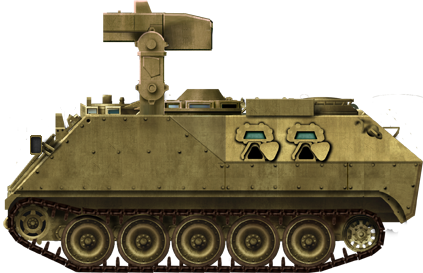
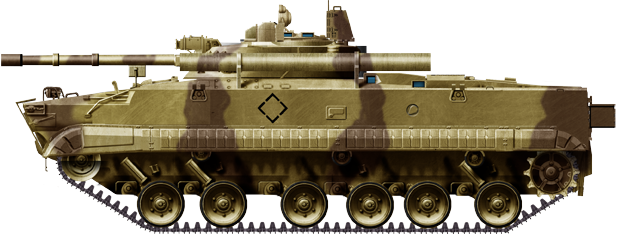
Saudi Arabia made an application for 950, but it seems only a fraction were delivered, or passed on the Kuwaiti army. Those of UAE took part in the Saudi Arabian-led intervention in Yemen, where it is currently deployed.
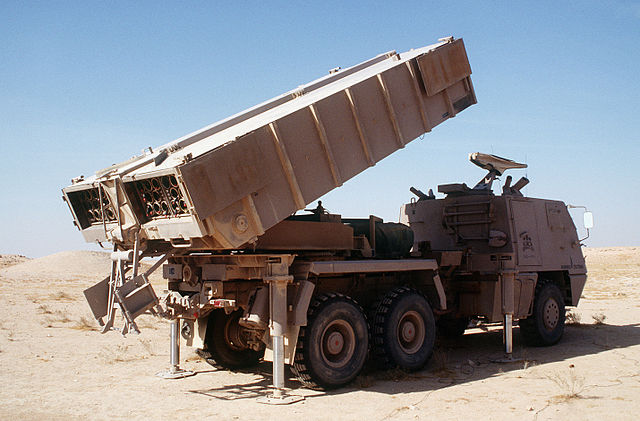
60 ASTROS 2 were in operation with SS-305, SS-40 rockets, but now sources are stating 77 are in park.
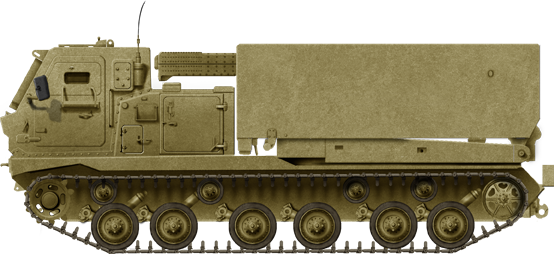
Saudi Arabia obtained a first batch of 50 vehicles, until the total reached 278 as of today. Alongside a massive towed and self propelled artillery, this is another massive asset for long range.
100 of these 220 mm multiple rocket launchers are used by the Saudi Arabian Army, Manufactured by the Saudi Arabian Military Industries.
Saudi Arabia allegedly obtained 98 vehicles.
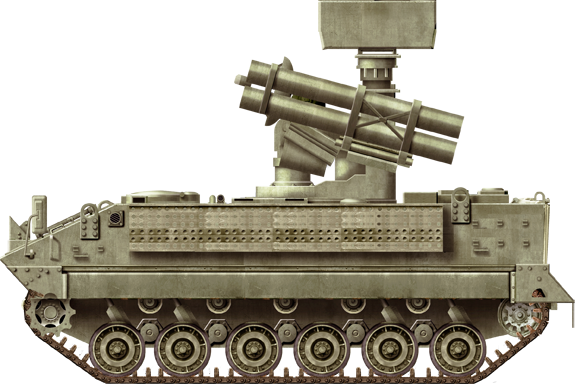
(to come)
8x8 APC locally built by and derived from the LAV-25, 240 built so far. Also exported to Lebanon, Kuwait and Pakistan. More to come.
2000s deliveries

Saudi M1A2, src reddit
In all, Saudi Arabian delieveries from 1990 amounted to 373 Abrams tanks, upgraded to the M1A2S configuration locally, plus 69 more M1A2S ordered on 8 January 2013 and delivered in 2014. They replaced the AMX-30 and now forms the bulk of the Saudi armoured divisions. Saudi Arabia bought at first 373 M1A2 tanks and a further 69 M1A2S ordered on 8 January 2013, delivered by 31 July 2014. The upgrade of M1A2 into M1A2S started later, with 153 on order since 9 August 2016. 20 Sausi Abrams were lost in Yemen.

Norinco's 1990s self propelled gun was exported to Saudi Arabia in 2008, 74 ordered and delivered as the main heavy tracked component after the M109, and AMX-GTC, now close to storage. Note that, in addition to 1000+ self propelled guns, motorized batallions of Infantry Divisions can deploy 205 M198 155mm towed howitzer, 172 FH70 155mm towed howitzer, 650 M114/M114A1, 910 M102 105mm towed howitzer and 80 M101/M101A1s.
156 delivered, based on an MkI Unimog platform.
An order was accounced for the (unknown details) as of April 2023, of 227/239 mm Chunmoo multiple rocket launcher launchers made in South Korea.
(More to come)

Cold War Tanks


































Cold war tanks posters

Cold War Main Battle Tanks

Cold War Soviet Army
Museums, Movies, Books & Games
The Tanks and Armor in pop culture
Tanks and armored vehicles in general are only really grasped when seen first person: The mass, the scale, it's all there. Explore also the way tanks were covered in the movie industry, in books and in video games.Movies:
Best tanks movie on warhistoryonline.com
On imdb.com
On bestsimilar.com/
miltours.com
liveabout.com/
watchmojo.com
Video Games:
pcgamesn.com
historyhit.com
levvvel.com
vg247.com/best-tank-games
mmobomb.com/
alienwarearena.com

